
The paper was first published in the Deccan Chronicle and reprinted in August, 1947 in The Jaina Gazette, Vol. XLIV (No. 8), p. 120. For the online reissue some old pictures showing impressions of Indra Sabha, which is mentioned in the paper, were added.
Contribution of Jainism to the Ancient Glory of the Andhras
Like Buddhism, Jainism played an important part in the history of the Deccan from the 5th century B.C. Unlike Buddhism, Jainism is yet a living faith in the country. According to the census of 1941, there were 24,853 Jains in the Dominion.
Jainism is not an offshoot of Buddhism. According to Jain traditions, Mahavira, the propagator of Jainism and the contemporary of Buddha, was preceded by several other Prophets or Tirthankaras. At least one of them is a historical person, by name Parswanatha, who is said to have lived 250 years before Mahavira.
Jainism is said to have prevailed in the Deccan, even before the time of Chandragupta Maurya. Nanded, halfway between Hyderabad and Aurangabad, now famous for its Sikh shrine, was associated with the Nanda Kings who preceded the Mauryas. These Nanda rulers patronised Jainism. The great Jaina migration to the Deccan, is however attributed to Chandragupta Maurya, who abdicated and followed the Jain saint, Bhadra Bahu. Both traveled to the Deccan and settled at Sravana Belgola, in the Mysore State, which continues to remain to the present day, as the most celebrated Jain place of pilgrimage in the Deccan. The Shramanas and the Shramanacharyas frequently mentioned by Megasthenes and other classical writers were Jains.
The word Jina means conqueror and refers to one who has conquered the senses. The greatest contribution of Jainism is its emphasis on the principle of Ahimsa or Non-violence to any creature, much less to any human being. There are two sects among the Jains, one sect maintaining that absolute nudity is a necessary condition of saintship and the other holding that the use of clothes does not impede the highest sanctity. The memory of the Jain prophets was preserved by setting up statues in their honour. The earliest monuments of Jainism in Hyderabad are the Jaina cave temples at Ellora, on the Northern spur of the hill. The most striking of them is the one known as Indra Sabha, with the colossal image of Indra seated on an elephant.
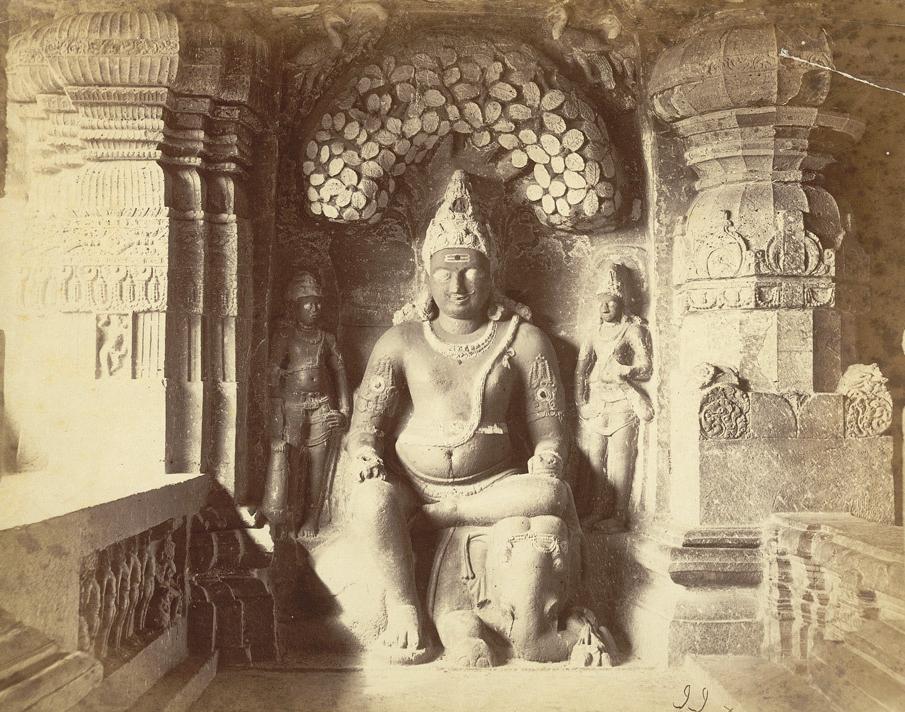
Indra sitting on an elephant, Indra Sabha, Ellora (Photo: columbia.edu)
The Rashtrakuta Kings of the Deccan in the 8th, 9th and 10th centuries and the later Chalukyas in the 11th and 12th centuries greatly patronised Jain scholars and saints. One of the Deccan towns, Kopbal, attained great celebrity as a centre of Jain religion and learning and attracted pilgrims from all over the country. In the Kanarese work Kaviraja Marga of the 9th century A.D. the place is called Mahakopanagara. Several inscriptions mention the gifts made by officers and chiefs for the benefit of the Jain monasteries at that place. An impressive statue of one of the Jain prophets found at Kopbal is now deposited in Nawab Salar Jung Bahadur's palace at Saroonagar, Hyderabad.

Indra Sabha, Ellora, c. 1850
The Hyderabad Museum contains a valuable gallery of Jaina statues of highly polished black basalt stone, mostly from the districts adjacent to the city of Hyderabad. One of them is a colossal statue of Parswanatha, nearly 14 ft. in height.
Jainism made an appeal to the Muslim rulers of medieval India and the Deccan. Simhakirti, the jain teacher won renown at the court of Md. Bin Tughlaq. Visalakirti received reverence from Sikandar Sultan. Vijayasuri, Vijayasena and Jinachandra enjoyed the patronage of Akbar. Hyder Ali granted villages to Jain temples.
Ancient views of Indra Sabha, Ellora (Pictures from columbia.edu):
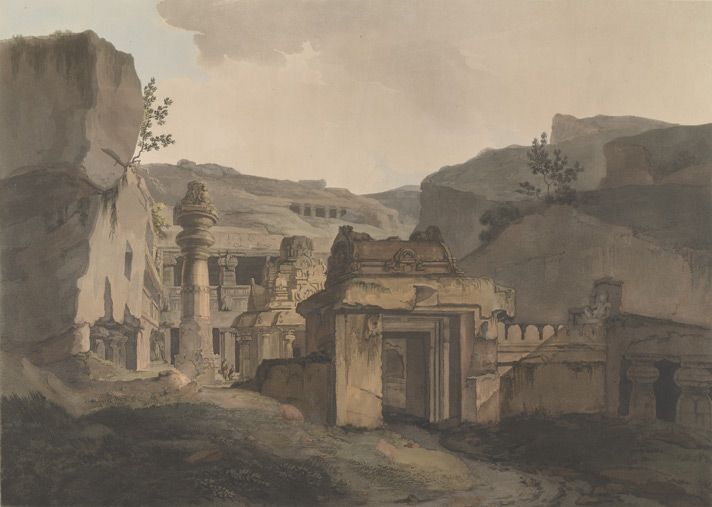
The entrance of Indra Sabha, by Thomas Daniell and James Wales, 1803.
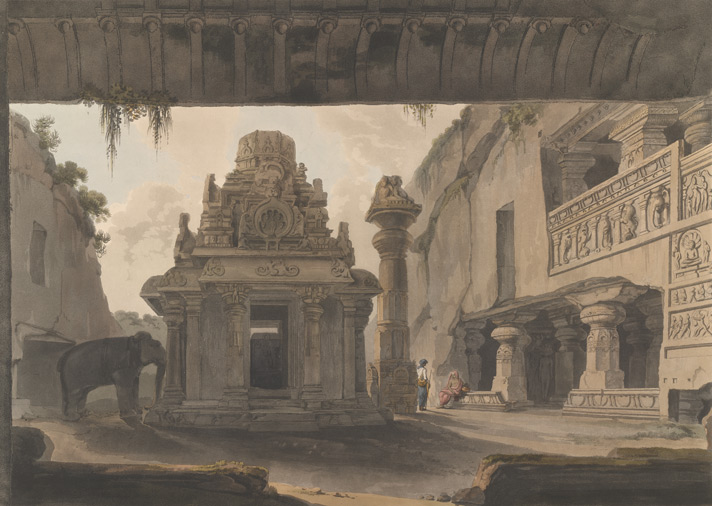
View of Indra Sabha, looking outward, by Thomas Daniell and James Wales, 1803.

Indra Sabha Cave, Ellora; by Lala Deen Dayal, 1880's.
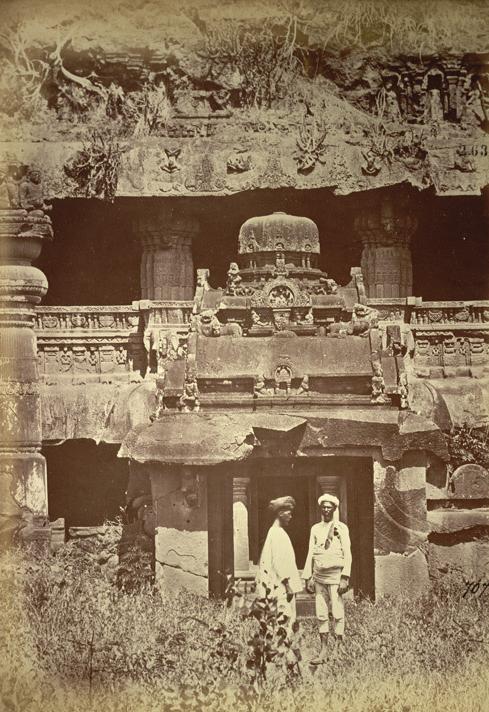
Entrance to the Indra Sabha rock-cut temple, Ellora, by Henry Mack Nepean, 1868.

Left wing of the Indra Sabha Jain Cave Temple (Cave XXXII), Ellora, c.1874.
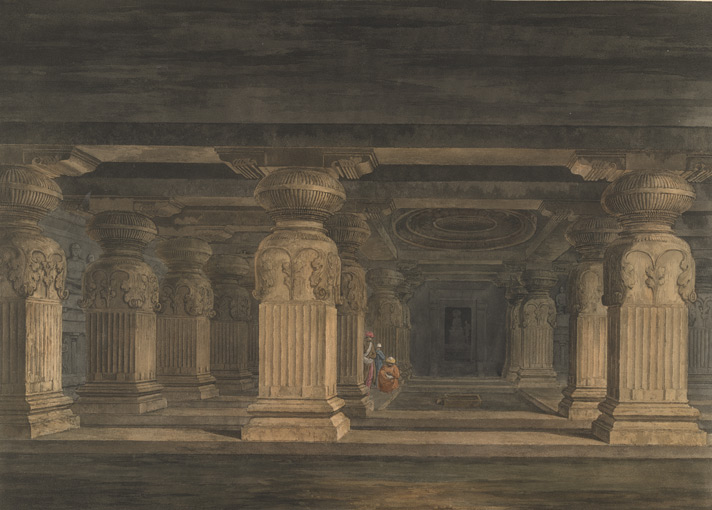
Indra Sabha, by Thomas Daniell and James Wales, 1803.

Indra Sabha Rock Cut Temple, Ellora; by J. Johnston, 1860's.

Great Excavated Temple at Ellora, drawn on the spot for the Hon. Lady Hood by Capt. Grindlay, 1813. Etched by G. Rawle, Engraved by G. Hunt, Coloured by J. B. Hogarth. From Grindlay's work, Scenery, Costumes and Architecture chiefly on the Western Side of India London, 1826-30.
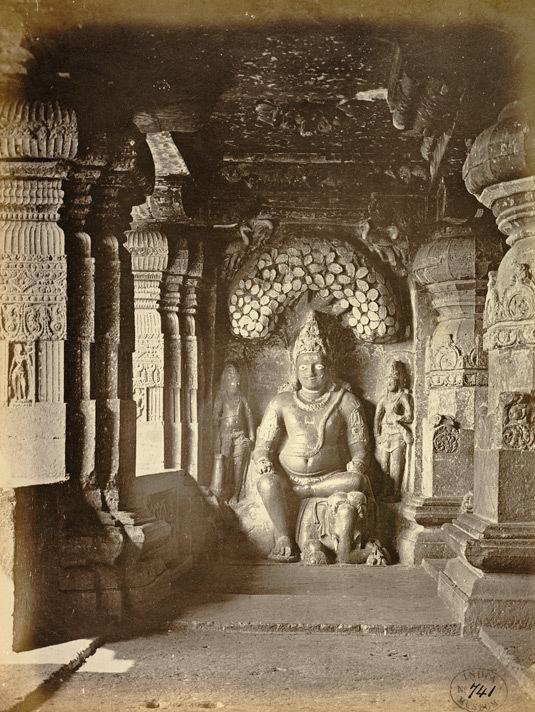
Sculpture of Indra in Indra Sabha Jain Cave Temple (Cave XXXII), Ellora, c.1874.
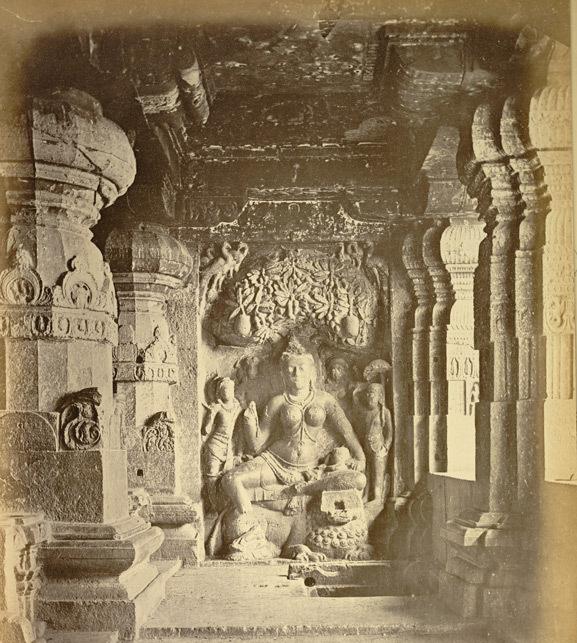
View of Durga image at south end of verandah of the Indra Sabha rock-cut temple, Ellora; by Henry Mack Nepean, 1868.
 Prof. S. Hanumantha Rao
Prof. S. Hanumantha Rao